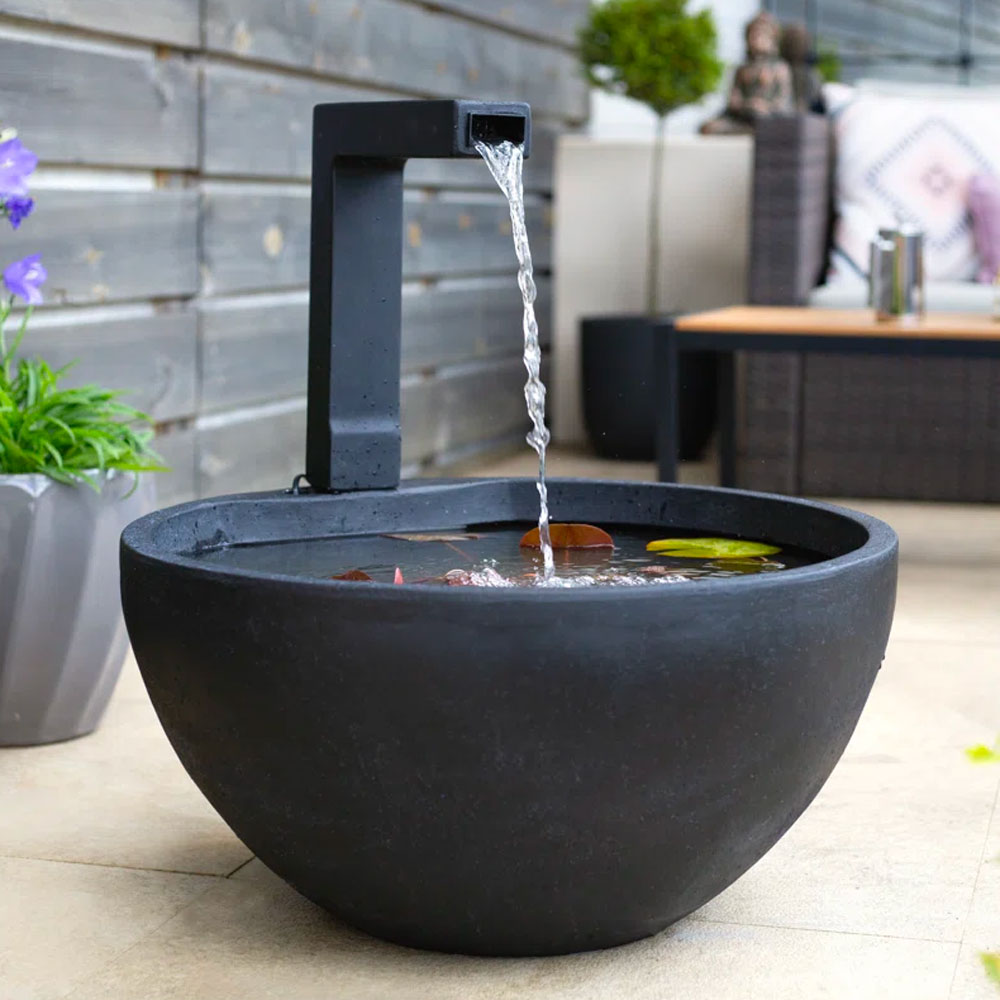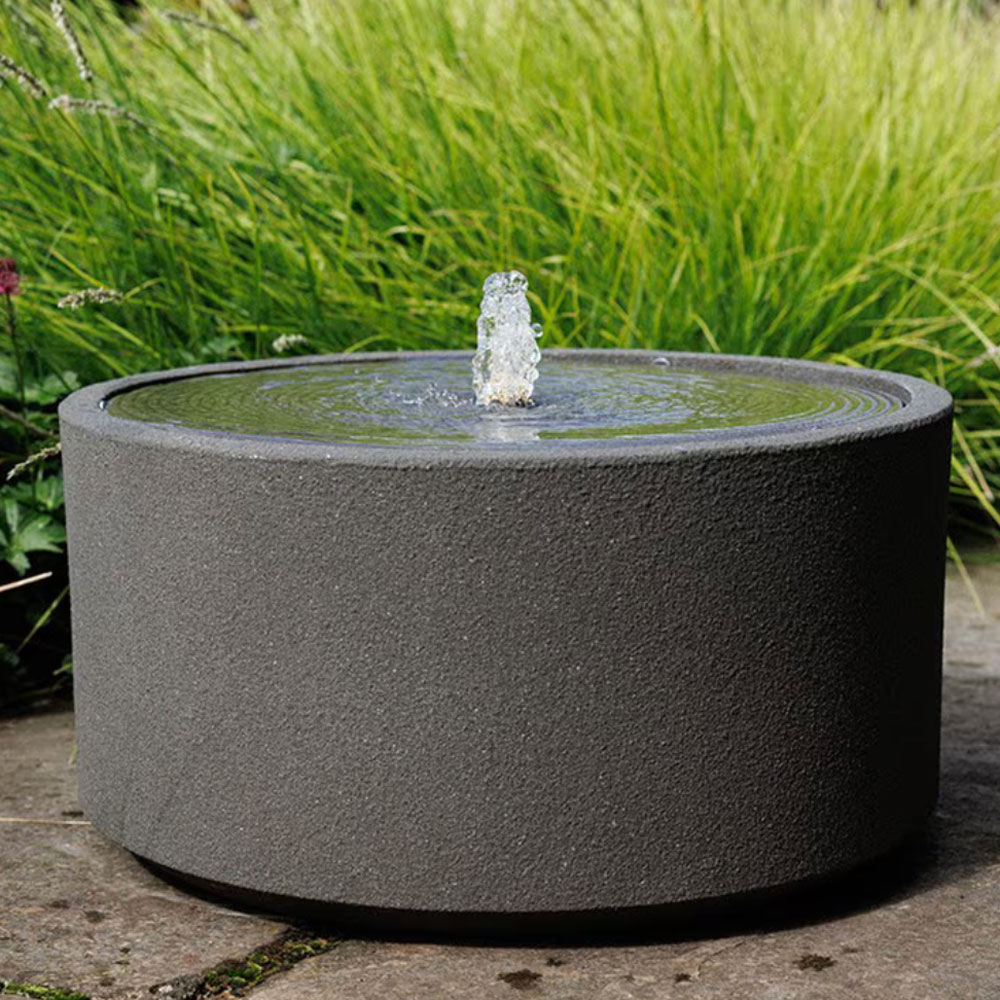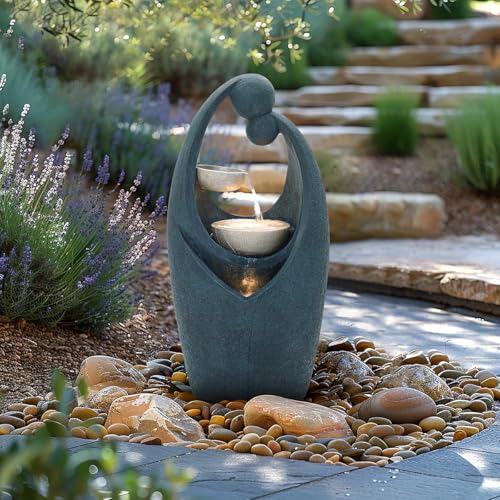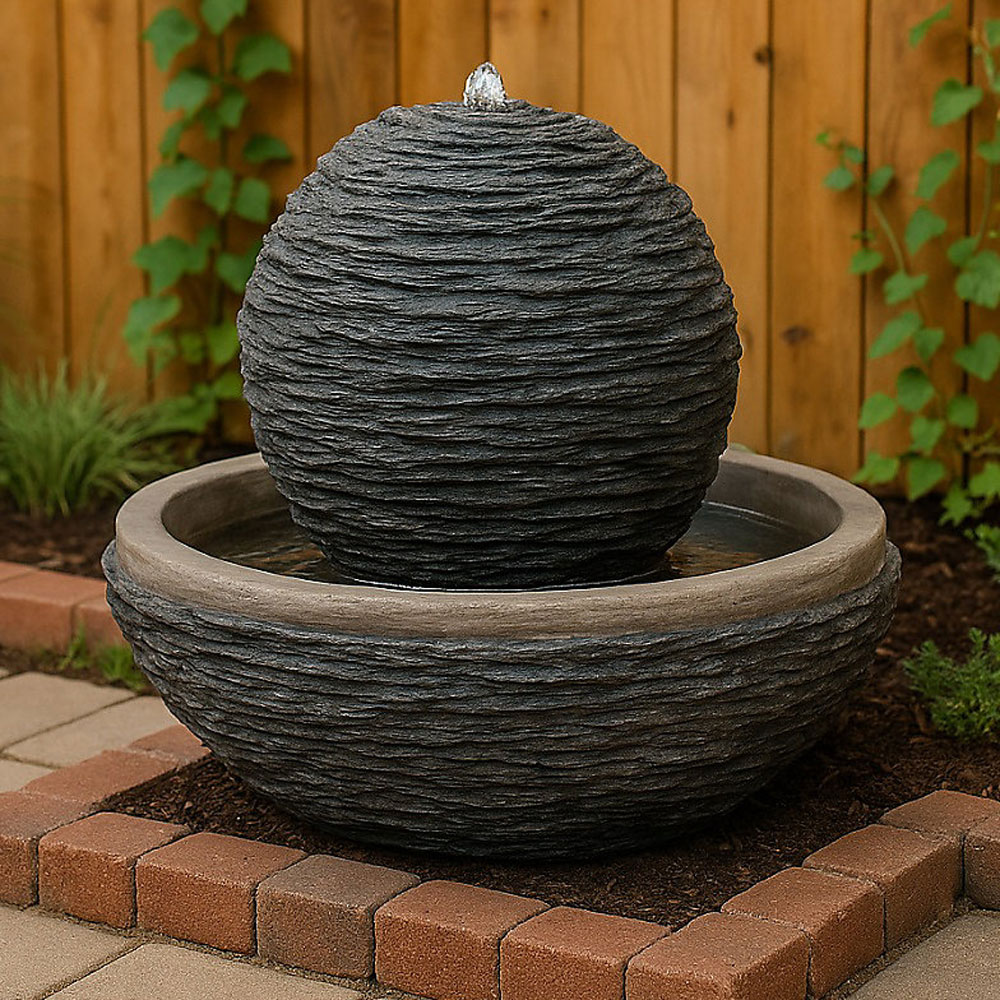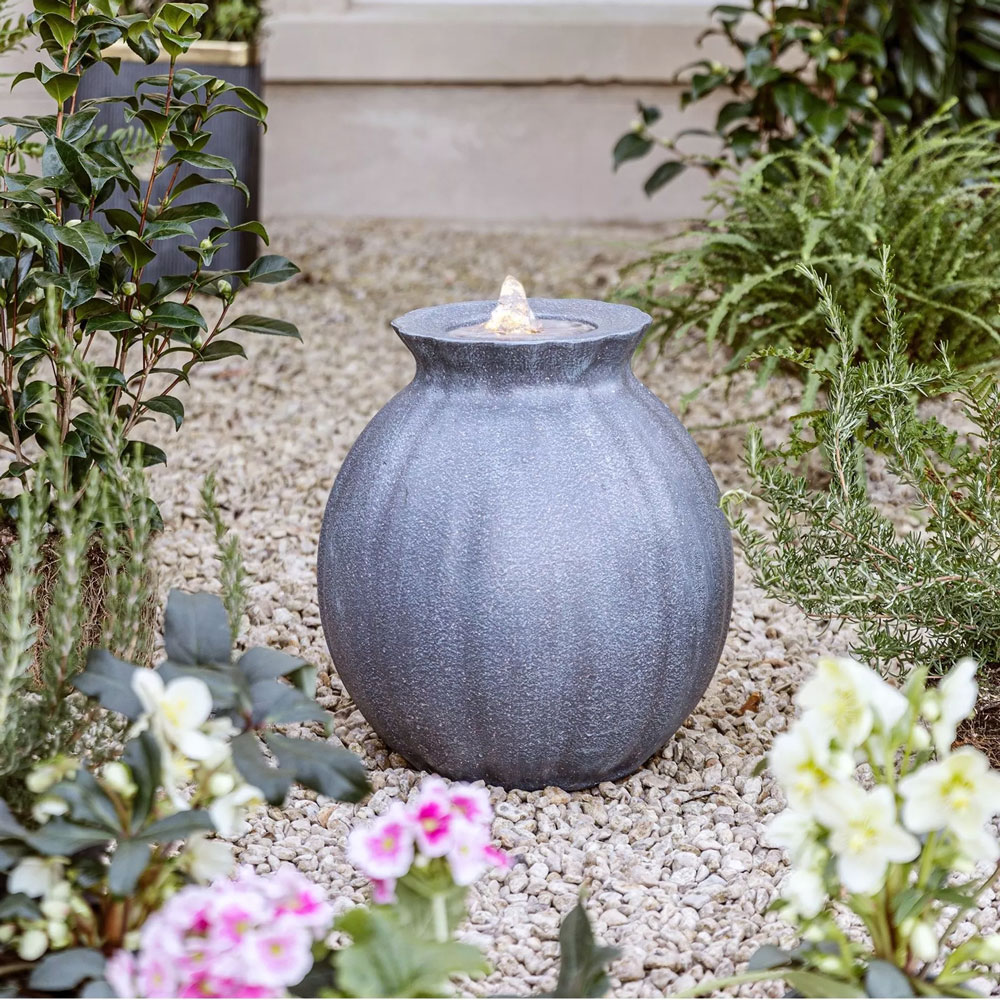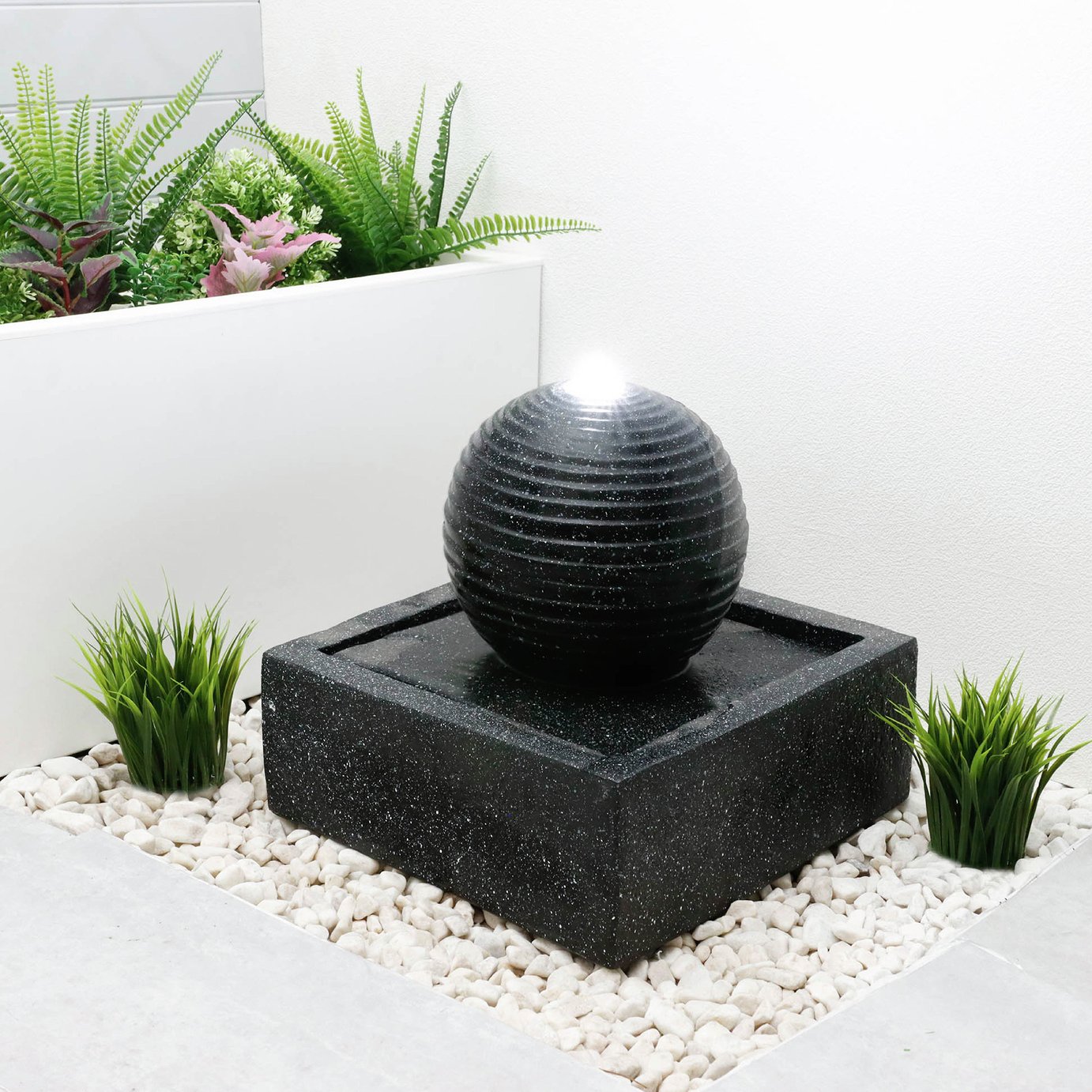8 beautiful water feature ideas that will work in any garden space
Enhance your garden with one of these eye-catching water feature ideas. Whatever the size of your garden (or your budget) it's an easy way to add serenity
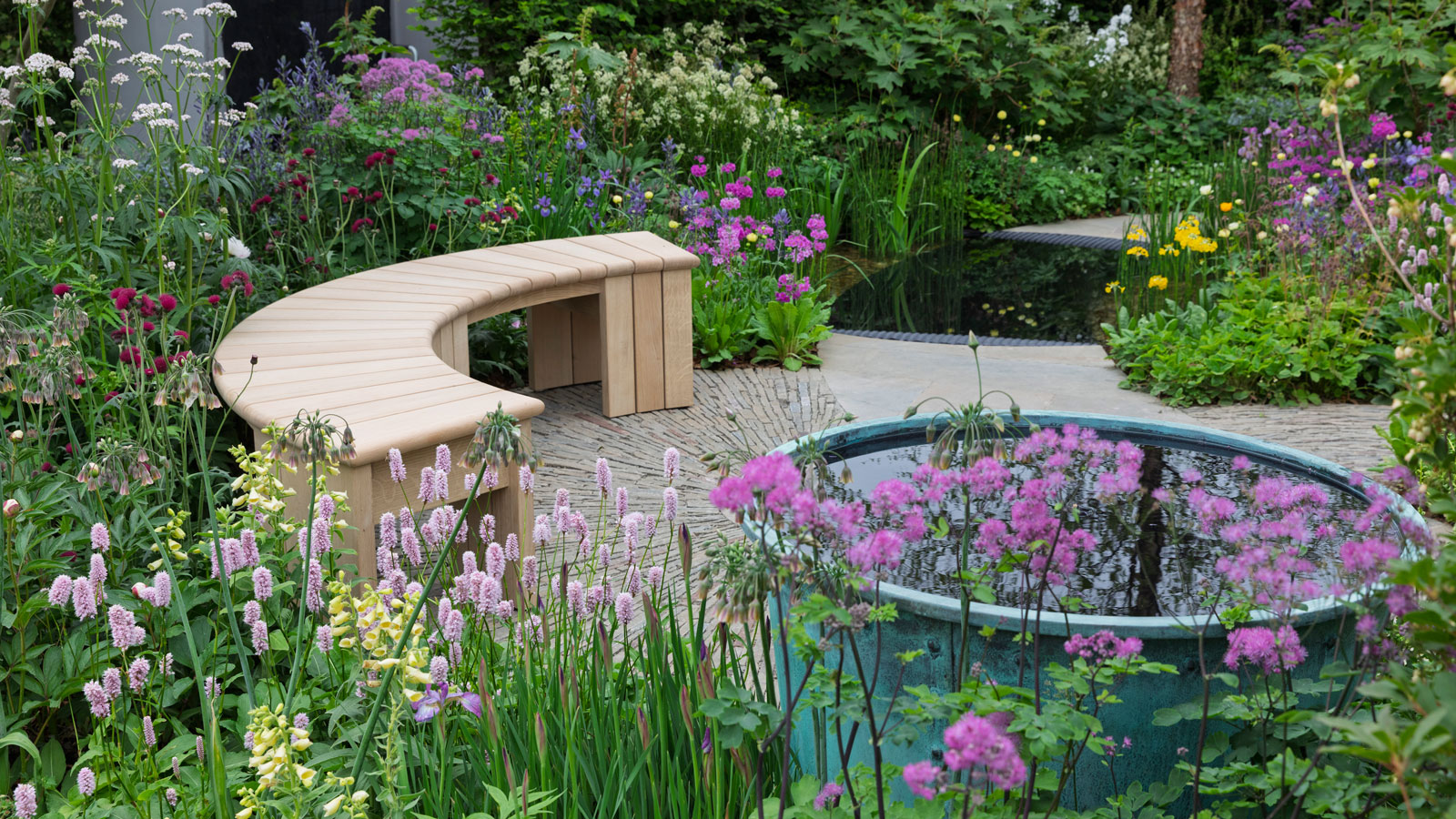
When it comes to water feature ideas, there really is something for everyone. If you have an urban balcony or petite patio, choose from the huge selection of small plug-in or solar water features that are available. Alternatively if you're blessed with plenty of space why not consider making water feature ideas the centrepiece of your garden with a fountain or rill running through the design.
There are many benefits to adding a water feature to your garden landscaping ideas. All the best moments in nature generally have a water element factored in. The sound of trickling water is so calming and beneficial to your well-being, so if you see your garden as a place to retreat from modern life make sure water feature ideas are part of the mix.
There are practical benefits too. A water feature that reflects the sky can give the impression of stretching your space. Adding water also encourages biodiversity and will attract wildlife to your garden. With these considerations in mind, we asked leading garden designers for their best water feature ideas and here's what they came up with.
1. Pull together a garden design with a rill
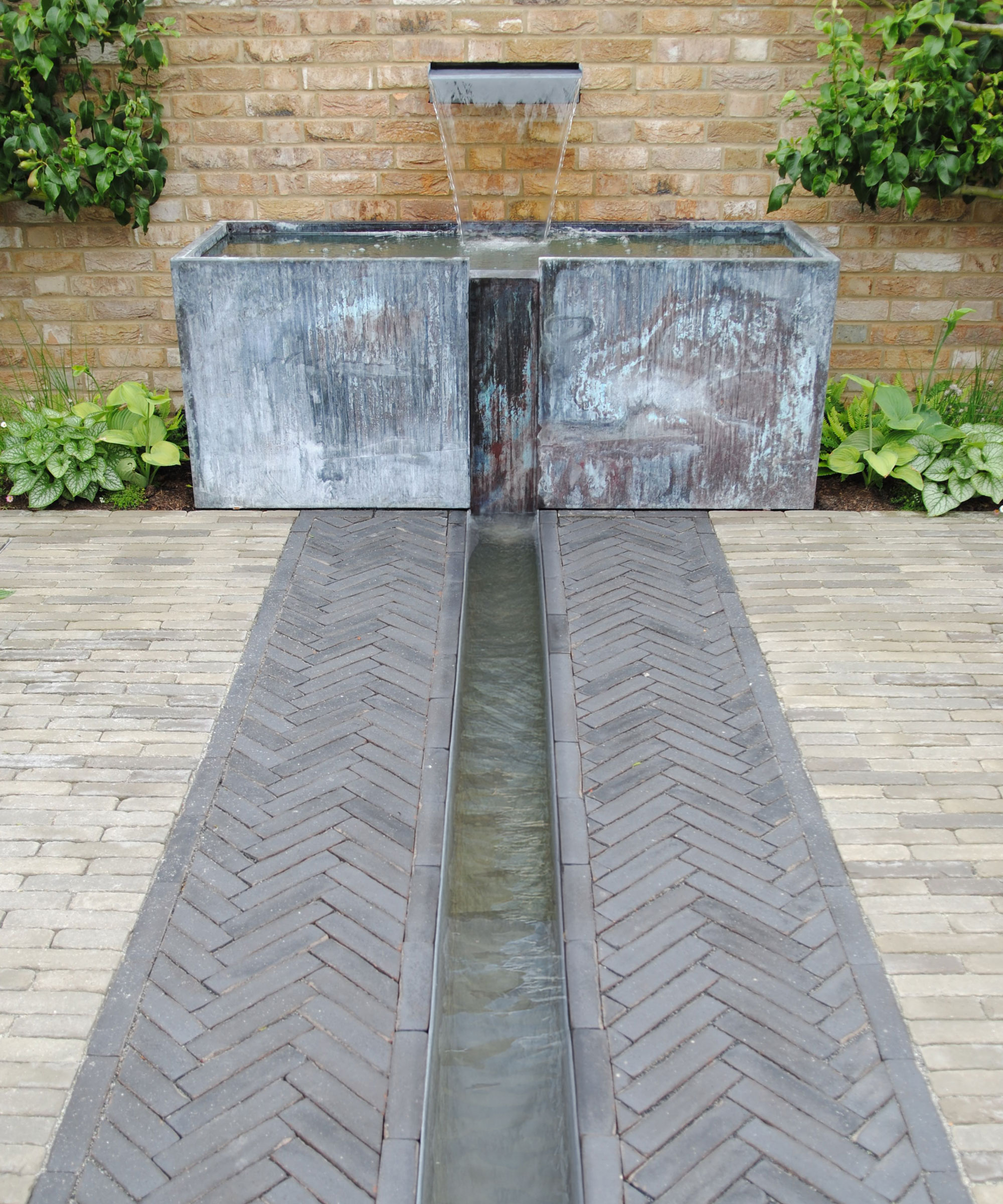
Few garden design elements are as quietly captivating as a rill, with the gentle trickle of water adding an ambient layer to the garden. But a rill is so much more than simply a water feature. It's a quiet thread that pulls together the garden design, often featuring in combination with garden pond ideas.
"This narrow, often shallow, water channel is one of the most understated yet effective features you can add to a garden," says garden designer Karen McClure. "It doesn’t shout for attention, but draws the eye, invites movement, and brings a quiet, reflective quality to outdoor spaces. With the right design, materials, and placement, a rill can elevate a garden from pleasant to poetic."
When designing a rill, proportion and flow are key. It should feel like a natural extension of the landscape, guiding visitors gently through the space, explains Karen. A linear rill works well in contemporary or formal settings, especially when bordered by symmetrical planting or hard landscaping.
Materials make a big impact. "In this project we used galvanized metal for its durability and modern aesthetic. It makes a striking contrast against lush greenery and reflects light beautifully." Stone or clay-lined rills also blend seamlessly into organic designs.
Bring your dream home to life with expert advice, how to guides and design inspiration. Sign up for our newsletter and get two free tickets to a Homebuilding & Renovating Show near you.

Karen McClure has successfully grown her company Karen McClure Garden Design from her passion for the landscaping industry. She is a fully accredited member of the Society of Garden and Landscape Designers (SGLD). The driving force behind KMGD, Karen continues to learn, develop and grow her company, to provide clients with the best garden designs.
2. Customise a water feature to fit the space

Work with the natural contours of your garden to create a water feature that fits harmoniously in to the space, rather than simply adding the standard circular or rectangular design. The result will feel much more natural as part of sensory garden ideas.
"We designed this garden for a family who wanted to enjoy life outdoors all year round, with plenty of space to relax and planting that provides an ever-changing display of colour and interest," says multi-award winning garden designer Helen Elks-Smith.
Water is a key part of this design. "A cooling water feature wraps round the main terrace to reflect the sky and add a sense of calm to the space," explains Helen. "We used rough textured boulders contrasted with the smooth paving and brick detailing to add further interest to the terrace area."
Helen points out that water features are not a low-maintenance feature, especially in the early stages during a settling in period. Natural ponds that are fairly heavily planted tend to find a balance fairly quickly but often require at least one season to look 'finished'.

Known for her thoughtful approach to design and expertise in subtle, textural planting, Helen Elks-Smith studied garden design at Writtle College and set up her studio in 2005. She was made a Fellow of the Society of Garden Designers in 2019 for her outstanding contribution to the industry. Helen has won numerous awards including two RHS gold medals, three design awards from the Society of Garden + Landscape Designers, and two Design Excellence Awards from the British Association of Landscape Industries.
3. Double up water features to repeat the theme
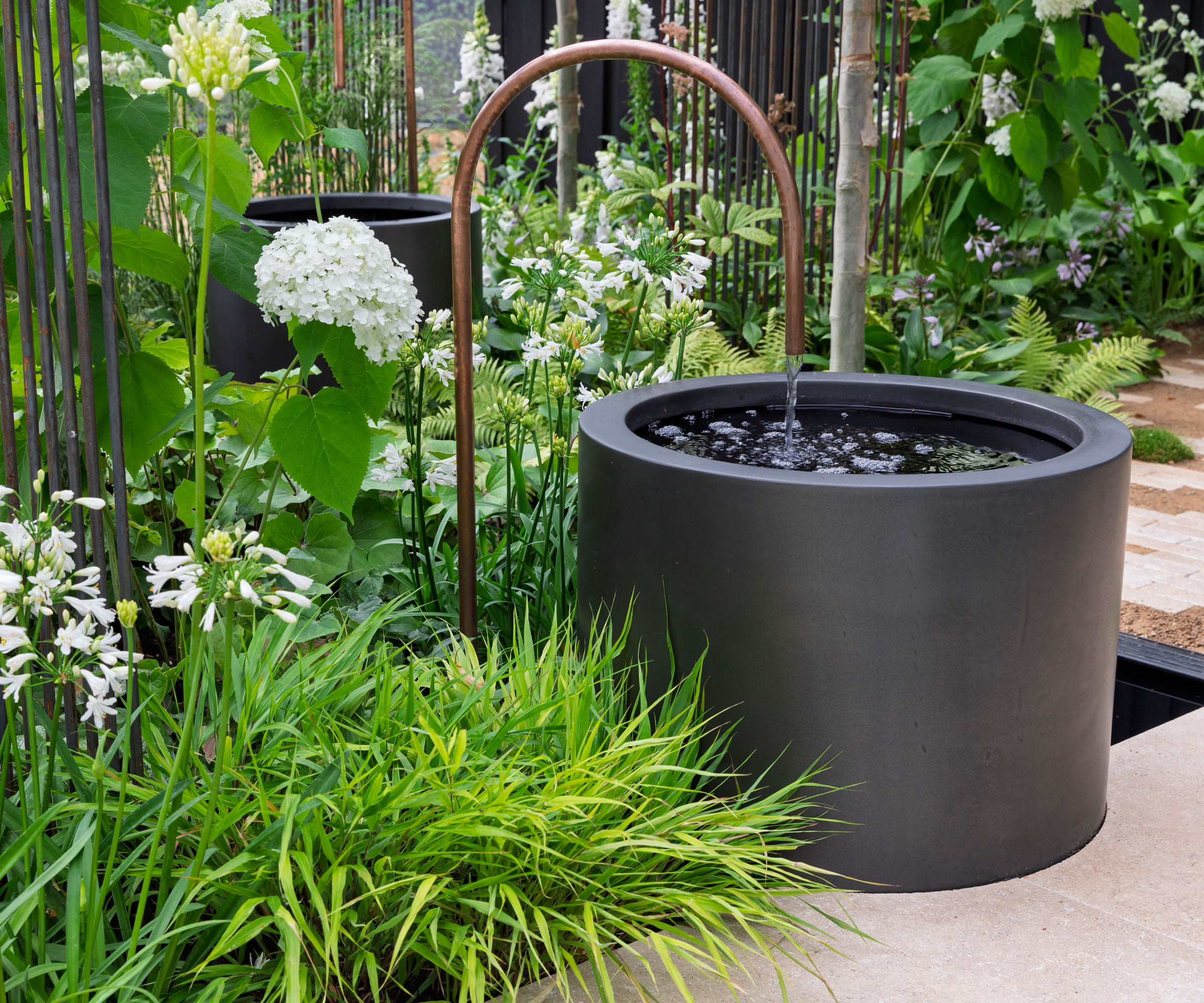
If you're looking for small garden design ideas the good news is it's easy to include water feature ideas in your plans. They don’t need to be complex either. Often it's the simplest designs that have the most impact, such as a small pool of water with a quiet trickle effect.
At this year's RHS Hampton Court Palace Garden Festival this award-winning design by Daniel March of DH Studios used a couple of serene water features to set the scene for an intimate courtyard garden idea.
The fibreglass water features by @livingreendesign are framed by elegant copper pipework that recycles water from the feature. This seamless flow helps to create a tranquil, reflective space complemented by rich, lush planting.
Shop water features
4. Add a water feature to a secluded gathering area
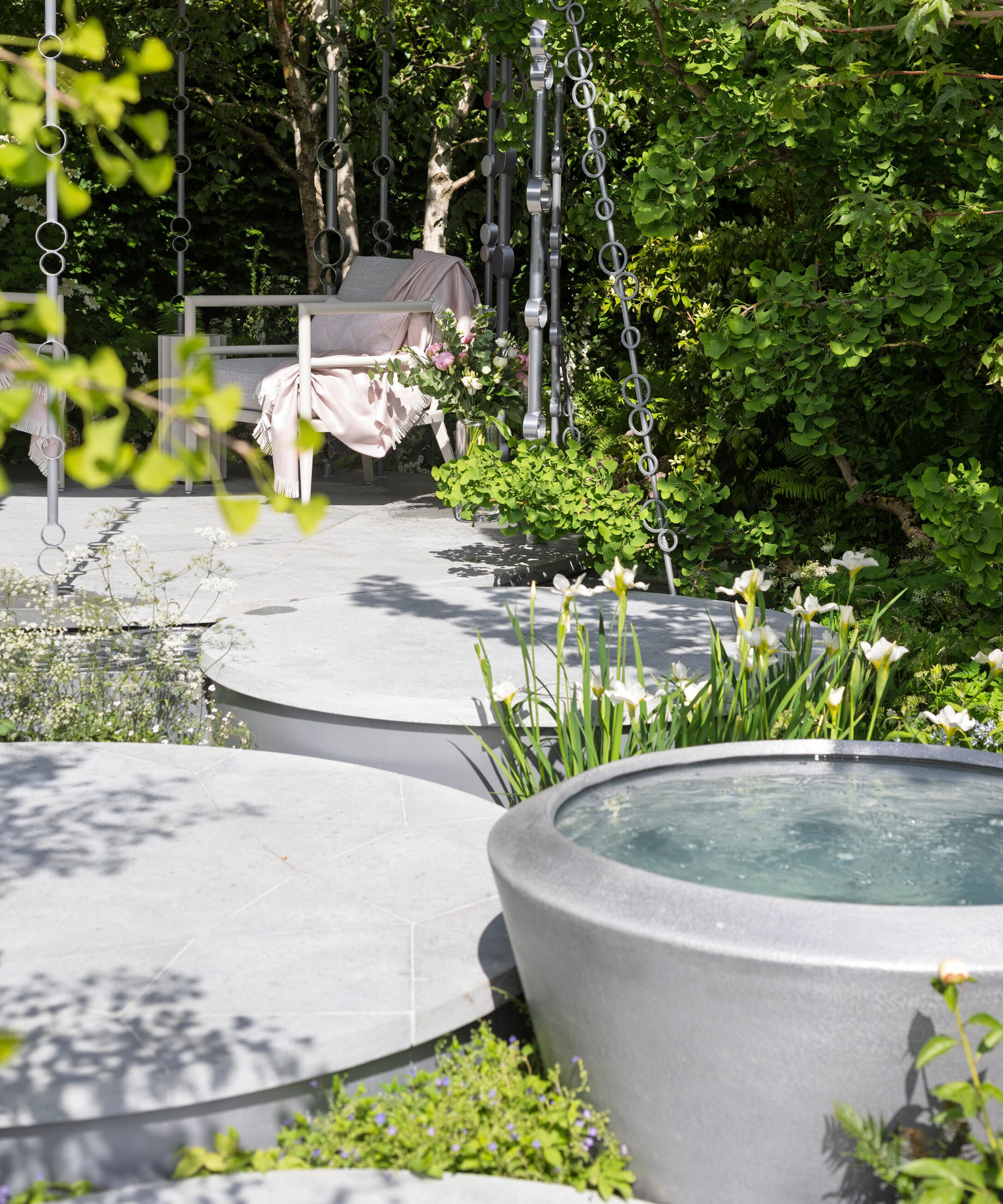
The movement of water helps to bring a garden to life, as well as offering endless opportunities for moments of tranquility and contemplation when positioned near a seating area. It’s important to create harmony between the water and the rest of the garden design, so make sure water feature ideas complement the surrounding plants and materials.
Ferns such as the Korean rock fern in this garden design by Catherine MacDonald are a great choice as they add texture and structure, and are a particularly good option for surrounding your water feature if you're looking for the best plants for shade. Catherine also uses the Astrantia ‘Shaggy’ cultivar, as they also perform best in cool, partially shaded summer conditions.
5. Opt for an easy water bowl
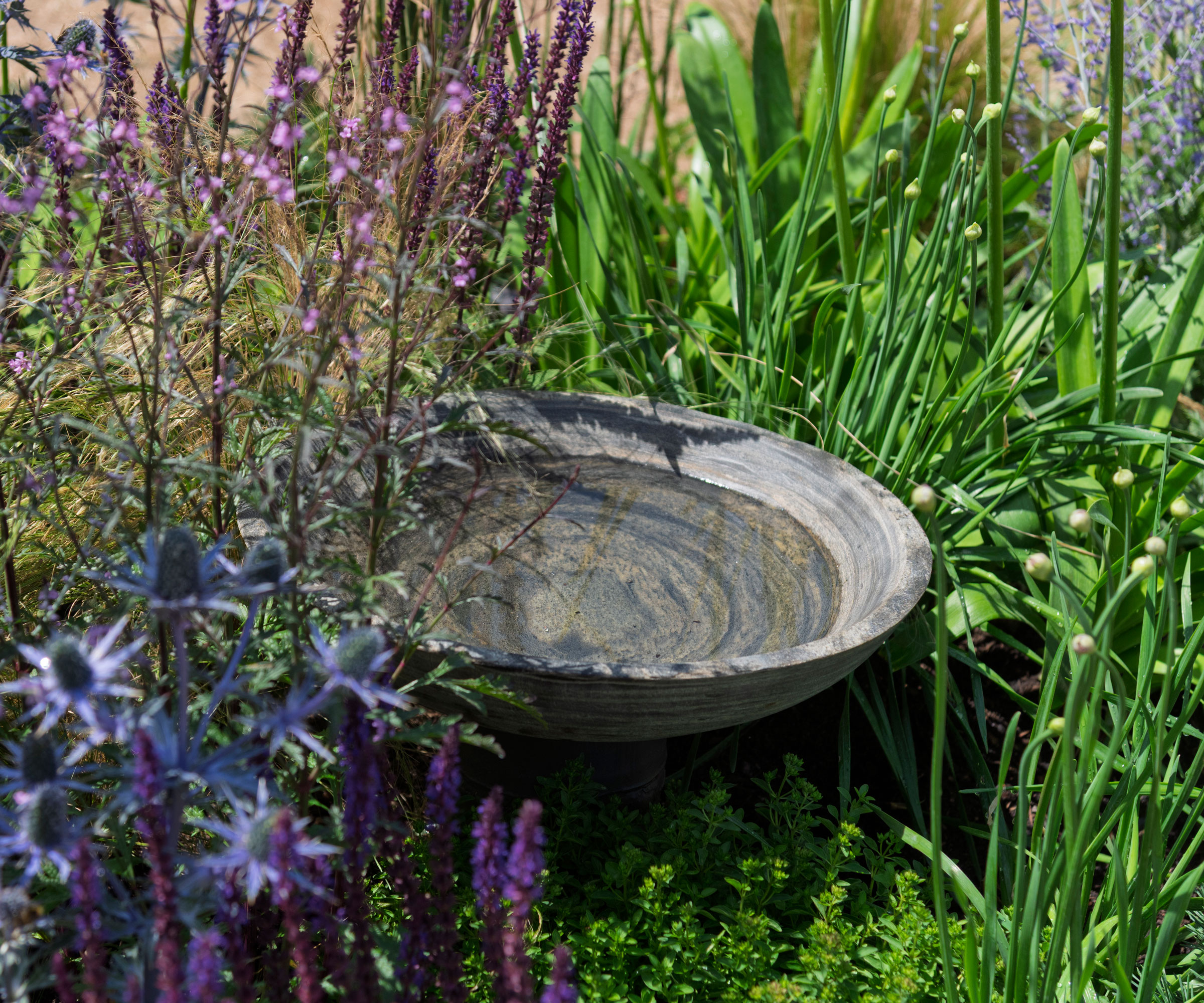
One of the simplest ways to introduce water feature ideas to your garden is with a water bowl. A design made of stone, concrete, metal or weathered steel will add a cool edge to a small contemporary garden and can literally be the size of a bird bath if space is tight. It's also a great way to help make your garden more eco-friendly.
Expert gardener Sarah Raven encourages everyone to incorporate water into their outdoor spaces. “A well-placed pond or water feature elevates a garden both aesthetically and ecologically. Water is one of the most important additions you can make to increase biodiversity in the garden as it adds an entirely new ecosystem."
As well as birds, water provides a breeding ground and source of hydration for a range of species, from frogs and newts to dragonflies and damselflies. "Not only is it glorious to sit back and admire the buzzing wildlife, frogs and newts are also handy for dealing with problematic slugs and snails," adds Sarah.
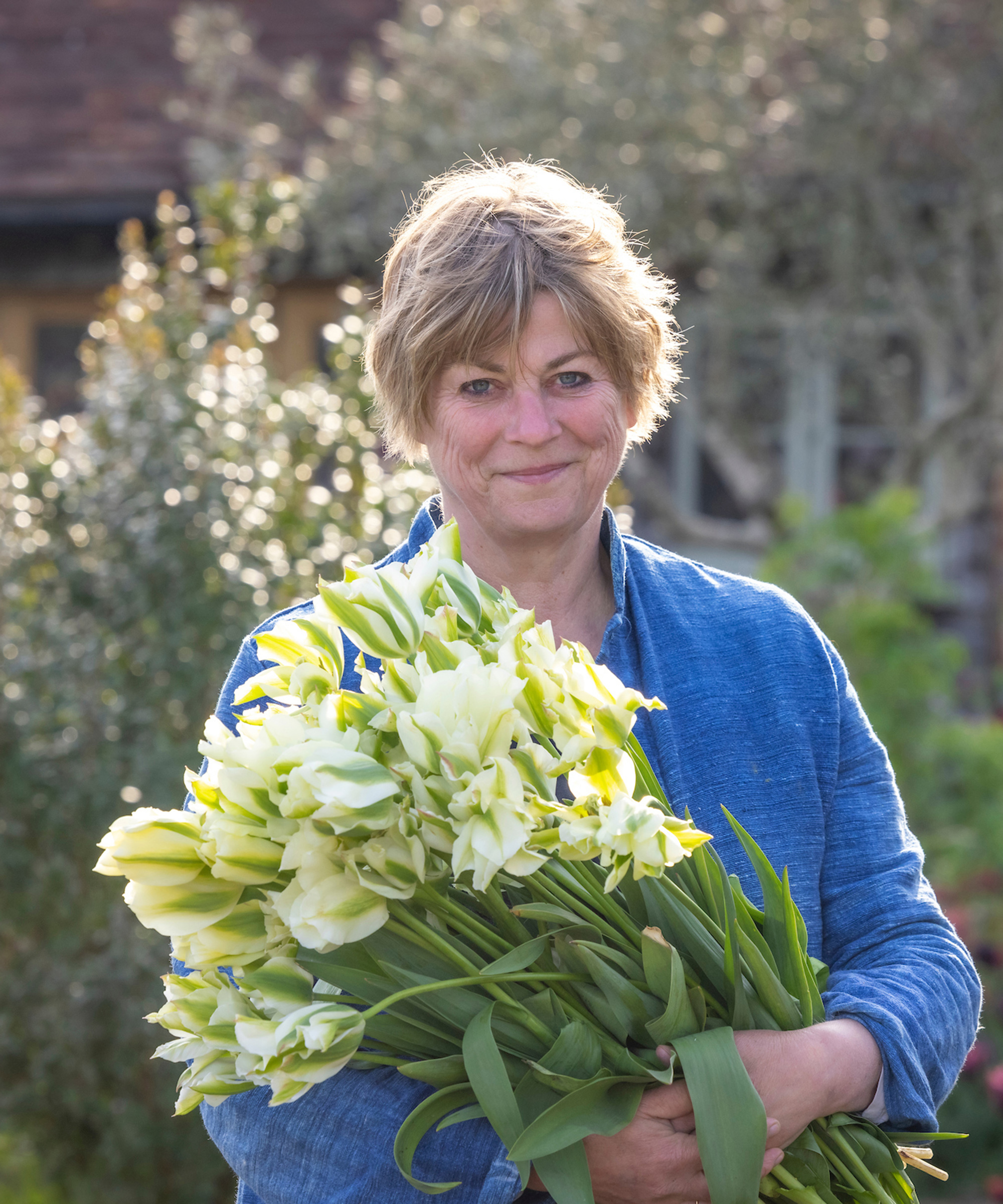
Sarah Raven is the author of 14 books, and hosts the weekly podcast ‘grow, cook, eat, arrange’ which welcomes guests from the world of horticulture and beyond, and equips gardeners with the knowledge and practical skills they need to grow their own dream garden. Always with an eye to being environmentally friendly, Sarah’s gardens are havens for birds, bees, and other pollinators.
6. Introduce a tiered fountain
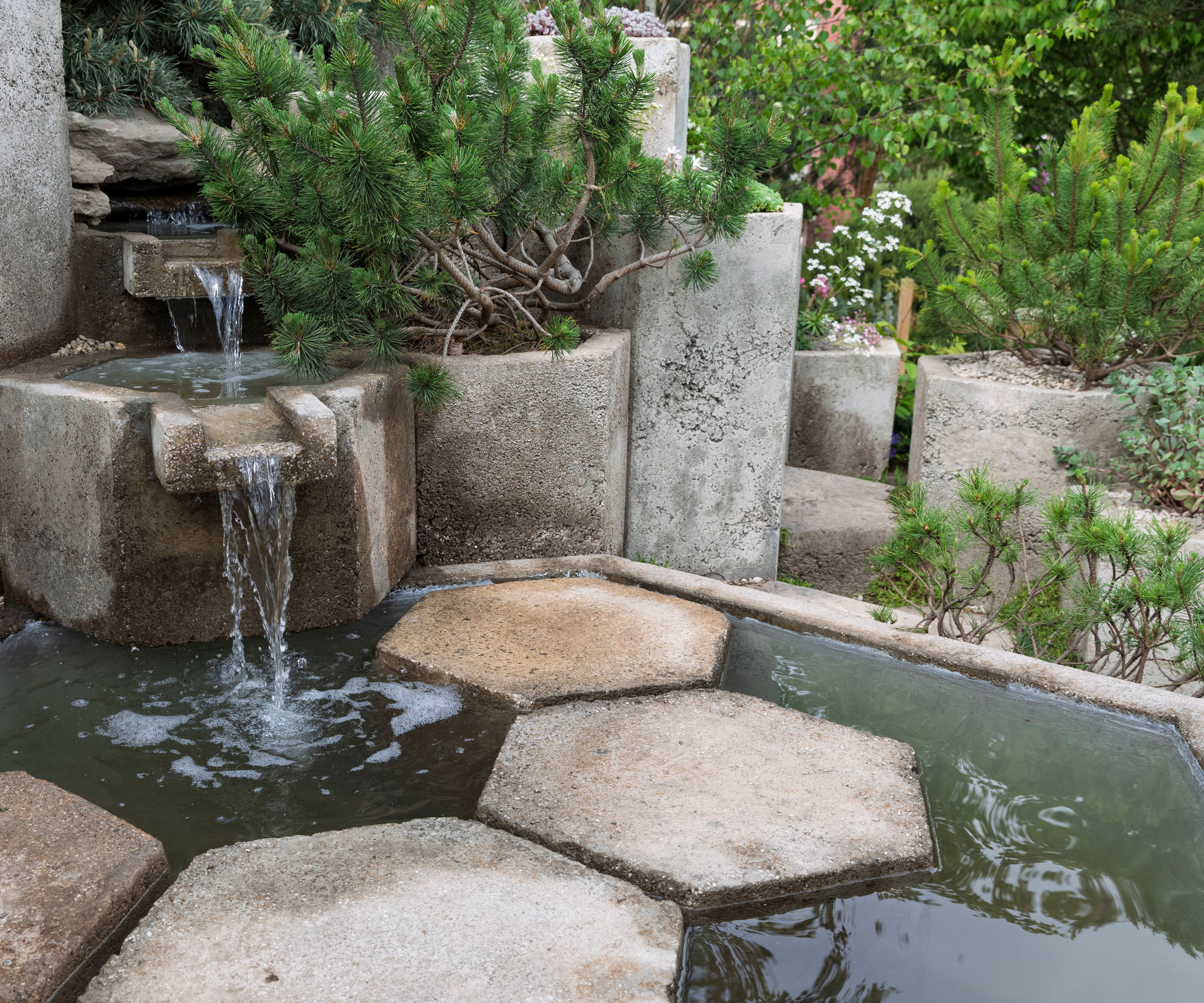
If you have plenty of room to get creative, consider introducing a more elaborate fountain as part of your water feature ideas. As well as adding all the benefits associated with water it will also serve as the centrepiece in your garden design.
This garden design by Tom Bannister and conceptual artist John Warland is a contemporary twist on an alpine garden, with large stone column-like planters that mimic traditional trough alpine displays, while areas of scree and crevice planting showcase a unique collection of plants. The fountain design replicates a mountain stream tumbling through the landscape, and includes planting of Swiss pines.
"A tiered fountain can be a fantastic addition to your garden," says technical product specialist Jack Middleton. "These often come in kits with everything you need, making them straightforward to install. Placing one near where you sit not only adds the soothing sound of water but also invites birds, bringing life and movement to the space.
"To make the water feature feel part of the garden, surround it with natural stone and plants that don't need constant attention. This softens the edges and blends the feature into the landscape."

Jack Middleton has expertise in product design and installation for Sunopy. This experience has given him the technical and practical knowledge to advise on water features that create innovative outdoor spaces. With over 16 years' experience in designing and delivering outdoor shade solutions, Jack's background in product design and installation ensures technical precision paired with a practical understanding of homeowners’ needs.
7. Try a water blade
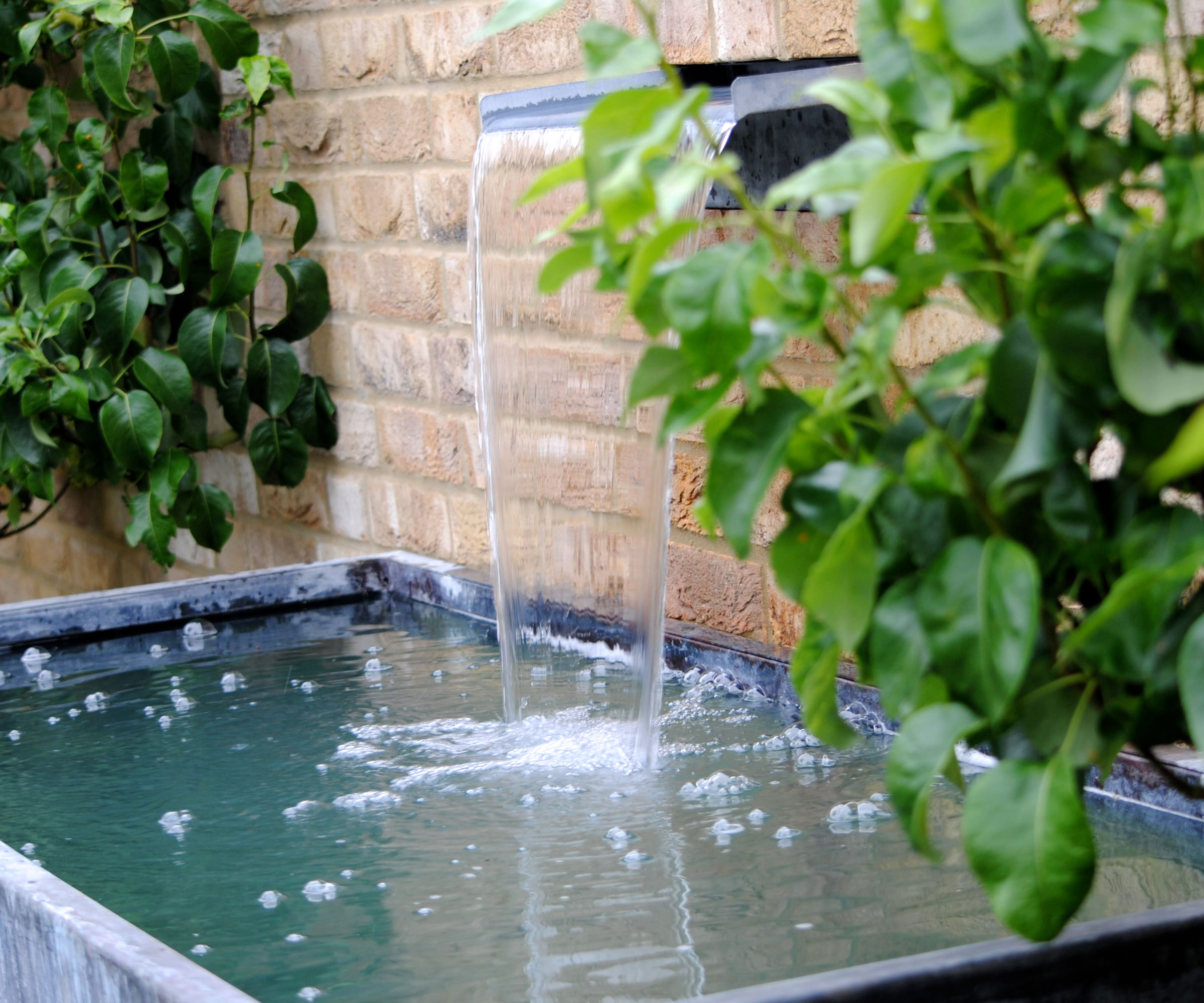
The sound of water flowing from a water blade is one of the most soothing experiences, in addition to adding an attractive design element to your landscaping. Water blades can be built into an existing wall or custom built into a new garden design.
When installing a water blade a key consideration is the size and depth of the pool the water will flow into. The pool needs to be deep enough to accommodate a submerged pump, and also wide and long enough to ensure any splashing from the water as it falls is contained within the boundaries of the pool. This galvanized tank design is perfect for the job.
You can also turn a water blade into a night-time feature by placing underwater lights in the pool to illuminate the water flow and transform it into a magical feature after dark.
8. Go for an easy water feature
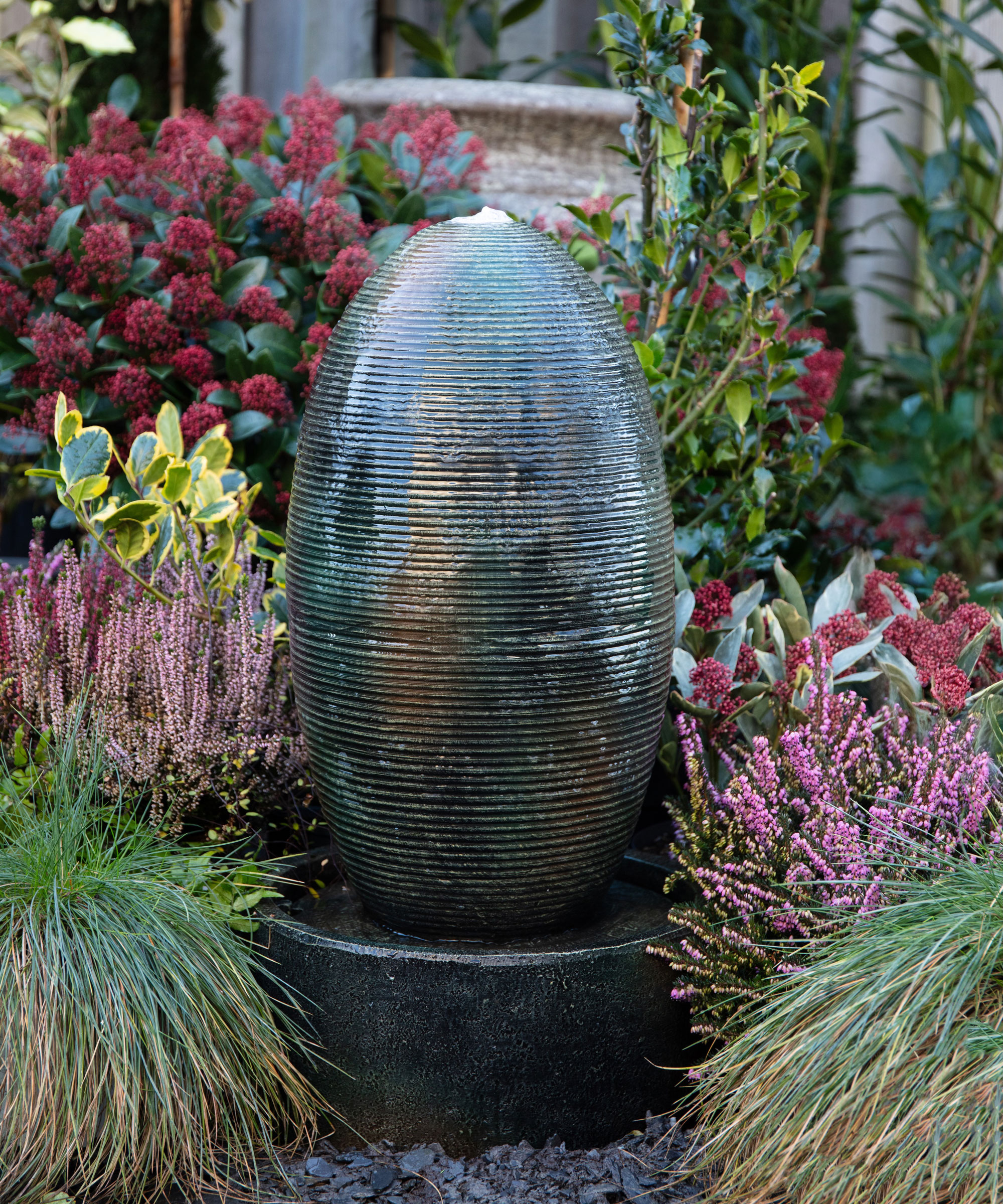
The latest easy off-the-shelf water feature ideas either run on solar power, are rechargeable or can be plugged into the mains. This means no excavation work, which keeps costs down if you're on a budget.
These water feature ideas are self-contained with a small pump that recirculates water. All you need to do is make sure you place them on a level surface.
They are often lightweight too, which means they're easy to move around your garden if you change your mind about where you want to position it. Some come with mood lighting to add a touch of intrigue to the evening garden. Remember to check durability and if the water feature you have in mind can be left out all year round.
A final point to consider about water feature ideas from garden designer Helen Elks-Smith. "Water heats up, especially in the summer months. The smaller the body of water the quicker it will heat up. Whether a water feature is topped up from the mains (automatic or with a hose pipe) or is naturally fed from rainwater run-off, the new water entering the water feature is very likely to contain high levels of phosphate, which causes algae and blanket weed blooms. Seeking expert advice on how to keep the water clear is always advisable."

Lifestyle journalist Sarah Wilson writes about garden design and landscaping trends. She has studied introductory garden and landscape design, and also has an RHS Level 2 qualification in the Principles of Plant Growth and Development. Sarah is a regular contributor to Homes & Gardens and Livingetc, and has also written for Modern Gardens, Country Living, and Country Homes & Interiors magazines.
